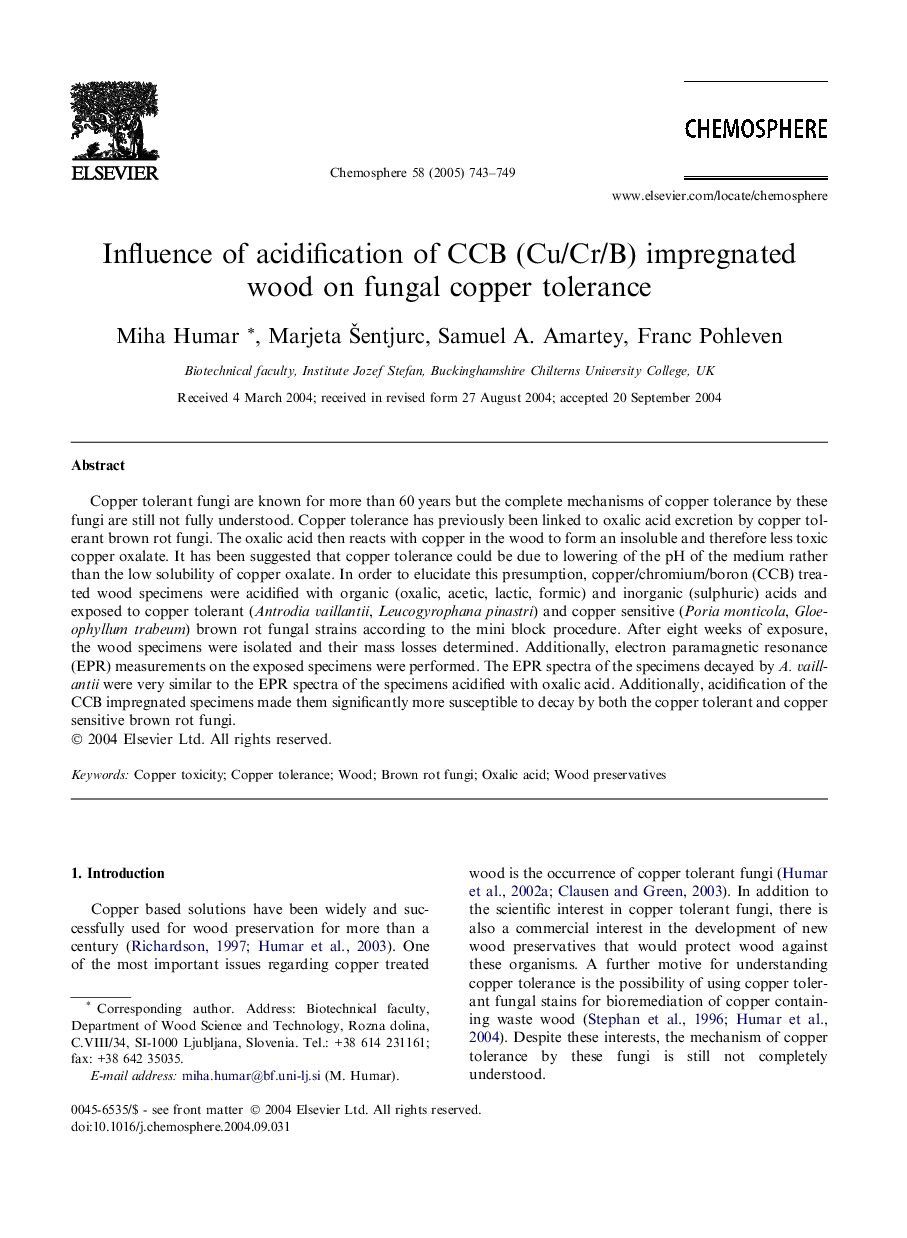| Article ID | Journal | Published Year | Pages | File Type |
|---|---|---|---|---|
| 9451751 | Chemosphere | 2005 | 7 Pages |
Abstract
Copper tolerant fungi are known for more than 60 years but the complete mechanisms of copper tolerance by these fungi are still not fully understood. Copper tolerance has previously been linked to oxalic acid excretion by copper tolerant brown rot fungi. The oxalic acid then reacts with copper in the wood to form an insoluble and therefore less toxic copper oxalate. It has been suggested that copper tolerance could be due to lowering of the pH of the medium rather than the low solubility of copper oxalate. In order to elucidate this presumption, copper/chromium/boron (CCB) treated wood specimens were acidified with organic (oxalic, acetic, lactic, formic) and inorganic (sulphuric) acids and exposed to copper tolerant (Antrodia vaillantii, Leucogyrophana pinastri) and copper sensitive (Poria monticola, Gloeophyllum trabeum) brown rot fungal strains according to the mini block procedure. After eight weeks of exposure, the wood specimens were isolated and their mass losses determined. Additionally, electron paramagnetic resonance (EPR) measurements on the exposed specimens were performed. The EPR spectra of the specimens decayed by A. vaillantii were very similar to the EPR spectra of the specimens acidified with oxalic acid. Additionally, acidification of the CCB impregnated specimens made them significantly more susceptible to decay by both the copper tolerant and copper sensitive brown rot fungi.
Related Topics
Life Sciences
Environmental Science
Environmental Chemistry
Authors
Miha Humar, Marjeta Å entjurc, Samuel A. Amartey, Franc Pohleven,
